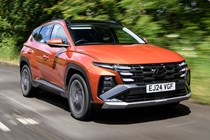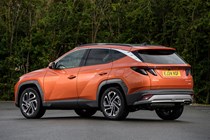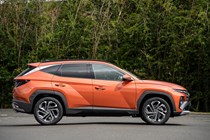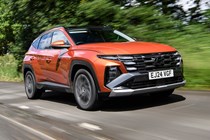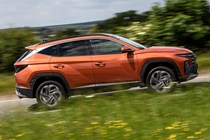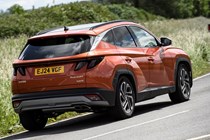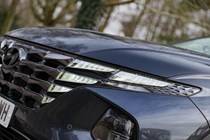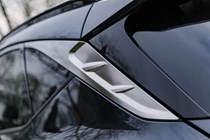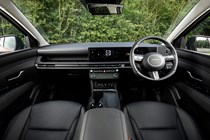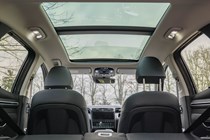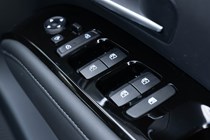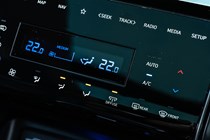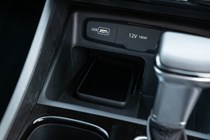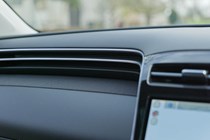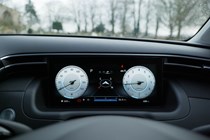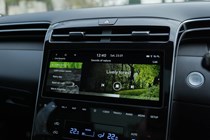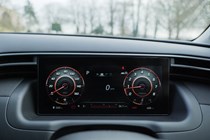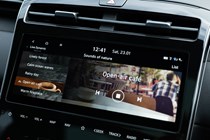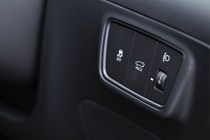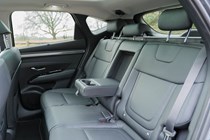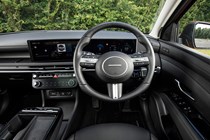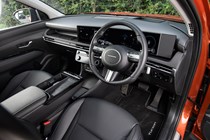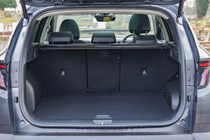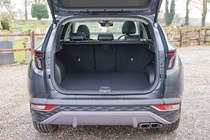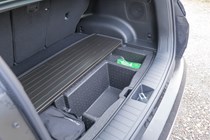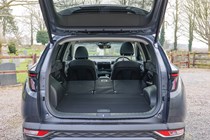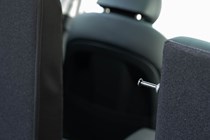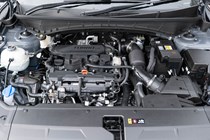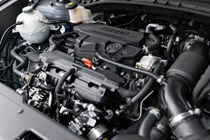
Hyundai Tucson engines, drive and performance
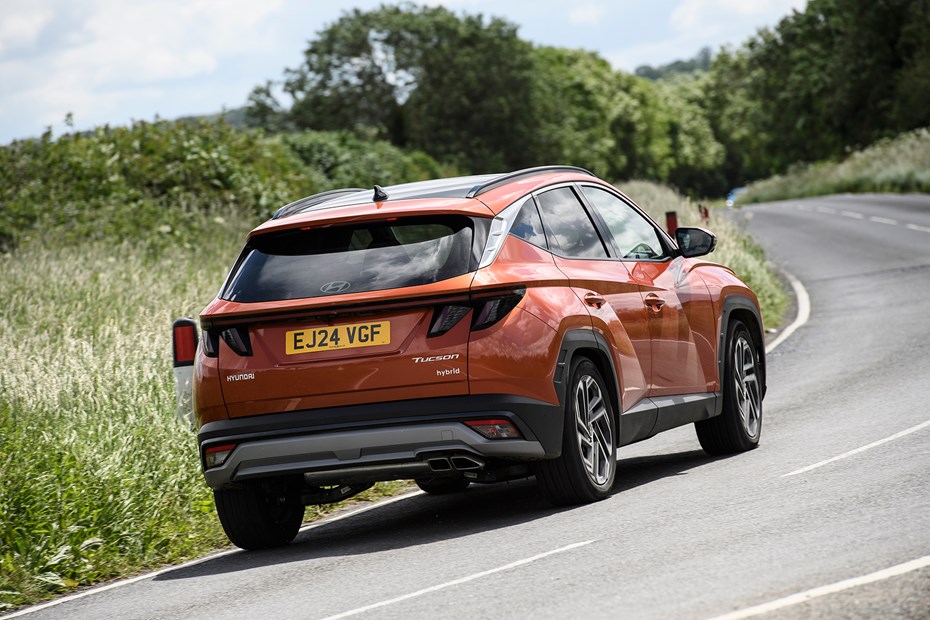
- All-petrol and hybrid engine range
- No diesel on offer in the UK
- Mild, full and plug-in hybrids on offer
Petrol engines
Every Hyundai Tucson uses the same 1.6 T-GDi turbocharged petrol engine. Within this, you get varying degrees of hybrid assistance – non-hybrid, mild hybrid, full hybrid or plug-in hybrid. There’s also a choice of manual or automatic gearboxes, and some models can be had with four-wheel drive.
The range kicks off with a non-hybrid, 150hp unit with a manual gearbox and front-wheel drive. We haven’t tried this set-up, but experience tells us this is likely to feel gutless and be thirsty. Performance is leisurely, taking 10.3 seconds to get from 0-62mph.
Going for a 48-volt mild hybrid (MHEV) car brings greater real-world economy and better response. The electrical system assists with acceleration, allows the car to coast at high speeds with the engine off and helps the stop-start system to operate smoothly.
While not exactly quick, the 150hp MHEV is smooth and responsive, and works well with the optional seven-speed automatic transmission. As for the manual models, they use Hyundai’s latest Intelligent Manual Transmission – that’s a manual gearbox with no physical link between the pedal and the clutch. In everyday driving, you’d be hard-pressed to know that there’s no connection, with a standard biting point that remains consistent.
The more powerful 180hp MHEV can be specified with four-wheel drive. All models come with three drive modes named Eco, Normal and Sport, but four-wheel-drive cars get Mud, Sand and Snow options as well – though don’t expect the Tucson to do any serious off-roading.
Hybrid engines
The full hybrid model is the fastest Tucson, with a 0-62mph time of 8.0 seconds. It uses a six-speed automatic and a 44.2kW electric motor with a 1.49kWh battery. This combination provides strong economy and performance, though like most non-plug-in hybrids, it won’t go more than a mile or two on electric power alone.
In normal driving, it’s quiet and refined, offering quiet motorway running and responsiveness around town away from the lights. Although it’s hardly inspiring-sounding, the performance is more than acceptable, and in Sport mode, it feels punchy for safe acceleration. There’s a notable step in noise levels when the engine takes over from the battery pack, and in this at least it lags behind the Nissan Qashqai E-Power for refinement.
The range-topping plug-in hybrid (PHEV) Tucson uses a more powerful motor and a larger 13.8kWh battery. Electric-only performance is just potent enough to keep pace with traffic. Wake the petrol engine up and it’s not quite as quick as the non-plug-in, but has plenty of power to whisk you up to motorway speeds without fuss.

More important is the electric-only range. Official figures state this is up to 31 miles, although you’ll only get near that if you’re pottering around town; expect more like 20 miles if you find yourself on faster roads. That puts it behind most rivals, especially the Toyota RAV4 Plug-in. Charging it up from a home wallbox will take around two hours.
What’s it like to drive?
- Relaxing to drive
- Sport mode does not make it sharper
- Plenty of grip but not much fun
There are two suspension set-ups to choose from in the Tucson. Most models have conventional springs and dampers as standard, but high-spec Tucsons can be had with electronically-controlled adaptive dampers. In Normal and Eco drive modes, these offer a softer comfort-biased ride, while Sport mode gets a firmer set-up, which also alters the weight of the steering.
The hybrids are relaxing around town, thanks to the combination of electric drive and petrol engine, and the set-up reminds us of Toyota’s highly evolved hybrids. You’ll see plenty of the EV-only mode light on the dashboard, too, while the plug-in model is able to travel on volts for far longer when fully charged. All Tucsons feature steering that’s light but accurate, while refinement is good on 19-inch wheels.
The mild-hybrid automatic is equally smooth, and the stop-start technology works pretty seamlessly – encouraging, when some rival systems tend to clunk in and out and leave you waiting when you just want to get going. The Hybrid’s default driving mode is Eco, which resists a heavy right foot: cross the line and you’ll get a groan of revs for minimal return. On more challenging roads, select the alternative Sport mode (using an awkwardly positioned switch ahead of the cupholder), which frees up the accelerator for more responsive power delivery and heavier steering.
Opt for the plug-in and it’ll start in electric mode, with a hybrid setting available if you want to extend battery power on a longer journey. It too has a Sport mode that’s able to prioritise power if you’re in a hurry. In the bends, all models have plenty of grip, certainly enough to question the need for four-wheel drive.


